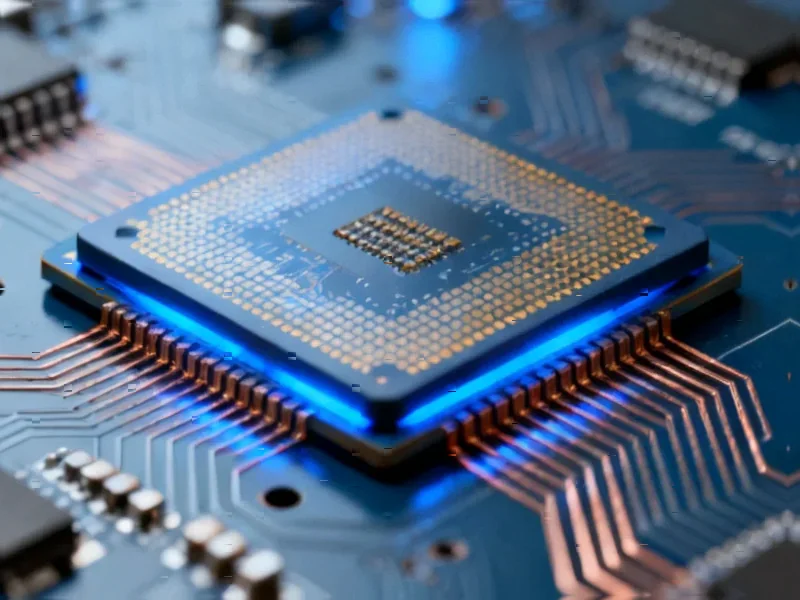According to Forbes, President Trump stated he will allow Nvidia to conduct business with China except for the “most advanced” Blackwell chips, emphasizing that “the most advanced, we will not let anybody have them other than the United States.” Nvidia’s shares rose 1.4% to $205.31 in premarket trading following these comments, coming after the company became the first to breach a $5 trillion market cap last week. During discussions at the Asia-Pacific Economic Cooperation summit in South Korea, Trump praised Nvidia CEO Jensen Huang as “amazing” and described Blackwell chips as “probably 10 years ahead of any other chip,” though he later clarified that no specific Blackwell discussions occurred with Chinese leadership. Huang expressed hope for future China sales while acknowledging the final decision rests with Trump, noting that China has currently blocked Nvidia from shipping there despite U.S. licensing. This creates a complex regulatory environment where both governments are imposing restrictions.
The Geopolitical Chess Game Behind Chip Restrictions
The selective export policy represents a sophisticated calibration of American technological advantage preservation. By allowing older generation chips while blocking Blackwell exports, the administration aims to maintain what Trump called in his 60 Minutes interview America’s current lead in the AI race. This approach acknowledges China’s massive market importance while attempting to preserve a multi-year technological gap in cutting-edge AI capabilities. The policy essentially creates a tiered system where Chinese companies can access capable AI hardware but remain several generations behind U.S. and allied nations in developing frontier AI models. This calculated compromise reflects the reality that completely cutting off China from advanced semiconductors would both damage American companies and accelerate China’s domestic chip development efforts.
Nvidia’s Precarious Market Position
For Nvidia, this policy creates both opportunity and vulnerability. The company’s recent market cap surge past $5 trillion demonstrates investor confidence in its dominant position, but the geopolitical constraints introduce significant operational complexity. Nvidia must now maintain parallel product development tracks—advanced chips for global markets and deliberately limited versions for China—while navigating shifting regulatory requirements from both Washington and Beijing. CEO Jensen Huang’s careful public statements reflect this balancing act, expressing hope for Chinese market access while deferring to political leadership. The situation creates substantial R&D overhead and potential supply chain complications that could impact margins despite the apparent market expansion opportunities.
Impact on Chinese AI Development Trajectory
Chinese tech companies face a bifurcated future under this policy framework. They’ll maintain access to capable but not cutting-edge AI hardware, which supports continued development in applied AI applications but potentially hampers their ability to compete in foundational model innovation. This may accelerate China’s already substantial investments in domestic semiconductor manufacturing and alternative AI architectures. Companies like Huawei have demonstrated capability in developing competitive AI chips, and these restrictions could provide additional impetus for China’s “whole nation” approach to semiconductor self-sufficiency. However, the immediate effect creates a performance gap that even determined domestic effort may take years to close, particularly given the rapid pace of Nvidia’s architectural advancements.
Broader Implications for Global AI Ecosystem
The selective restriction approach establishes a precedent that could reshape global technology development patterns. Other nations may implement similar tiered export controls for strategic technologies, creating a fragmented global innovation landscape. For multinational corporations, this means navigating increasingly complex compliance requirements across different markets. The policy also raises questions about how “advanced” versus “acceptable” chips will be defined as technology evolves—will restrictions apply only to Blackwell-class hardware, or will they dynamically adjust with each new generation? This uncertainty creates planning challenges for global enterprises building AI infrastructure and could lead to regional specialization where different geographic hubs focus on different tiers of AI capability.
Long-term Strategic Outlook
The Trump administration’s approach represents a middle path in the technology cold war, but its sustainability remains uncertain. As AI capabilities advance, the gap between restricted and permitted chips may narrow, requiring constant policy recalibration. Both nations have incentives to find stable equilibrium—the U.S. to preserve technological leadership while maintaining market access, China to continue AI development while reducing dependency. However, the fundamental tension between technological competition and economic interdependence suggests ongoing volatility. The coming years will test whether this calibrated approach can maintain stability or whether escalating technological competition pushes both nations toward more restrictive positions, with significant consequences for global AI progress and international technology collaboration.




